You would think with all the news about plastic, that there just might be a little less of it. You would think with the viral posts going out about animal ingesting plastic people just might change some of their habits. People might be using less. You would think with all the news about plastic oceans and beach clean up, people would be paying attention….But I just don’t see it. I don’t see it in over-stuffed trash cans, I don’t see less plastic on the streets and I certainly don’t see it on the beach. In fact, I would venture to say that people are using more plastic, buying more stuff and throwing away more junk than ever before. We have truly become a disposable society. 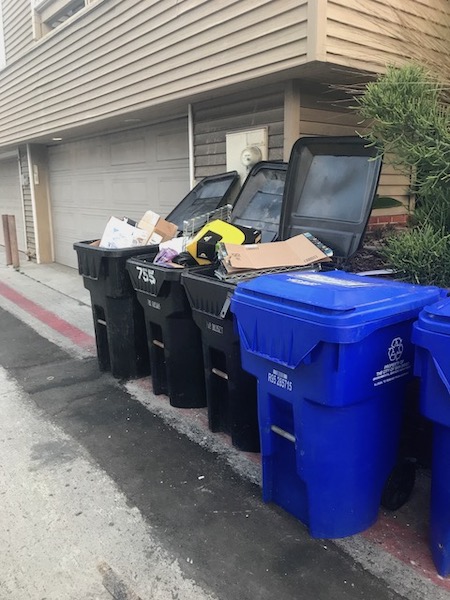
Whether it is because they don’t care and or they are ignorant.. one has to wonder what does one do to stem the tide of trash?
It is said that globally humans buy a million plastic bottles per minute and 91% of all plastic is not recycled. The prediction is that over half a trillion plastic bottles will be sold in 2020… In another study by Ghent University in Belgium, found that people who regularly eat seafood eat up to 11,000 tiny pieces of plastic yearly. Another study at Plymouth University found that 33% of all fish caught in the UK contained tiny pieces of plastic.
Where does this plastic land? You guessed it landfills and water bodies in particular the ocean.
The answer is not to just recycle, it is to use less and to really think how you buy products. The answer is to live a life of less waste. When you go to purchase an item think about the following.
- How much do you really need this product?
- What would happen if you didn’t buy this product?
- Do you have other alternatives?
- What type of packaging come with those products?
- Can the packaging be recycled?
- How much money would you save if you didn’t buy this product?
What If?
1.) You stopped buying coffee? According to the Daily Coffee News, 64% of people drink coffee. Other reports say that Americans spend… $1,100 per year on coffee. Tea in the United States is a whopping $2 Billion. A report said that there are 600 billion cups produced and sold globally on an annual basis. Starbucks alone says it contributes 1 percent of those disposable cups: That’s an estimated 6 billion cups a year. Add in a the stirrers and straws and that is a lot of plastic that goes into our oceans.

- Portland, Oregon: Recycling Advocates estimates that 50 MILLION disposable coffee cups are used in the Metro area per year. This equates to 3 MILLION pounds of solid waste being generated and 6,000 metric tons of CO2 being generated. This is equivalent to almost 600,000 gallons of gas consumed, or 6 million pounds of coal burned for one year. Starbucks alone uses.. between 2.916 and 2.946 billion cups at their stores, or an average of 8,070,428 per day. Starbucks website states that they “account for approximately 4 billion cups globally each year. I know that I pick up just in my little .5 mile of beach around Starbucks cups and lids per day.
- You stopped buying coffee in a cup? Brought your own cup?
2.) You stopped buying snack food? $27 billion were generated in salty snack sales in 2017. About $49 Billion were spend in cookies, candy, crackers, nuts and ice-cream, just in the United States. Much of that food wrapping ends up in the streets and our ocean. Little scraps of snack food wrappers litter the beaches.

3.) You stopped buying sugary drinks? According to the Department of Agriculture Americans spend more money on soft drinks than any other food item. These beverages include sugar-sweetened beverages, fruit juices, energy drinks, sweetened tea, and soft drinks. This accounted for over 7% of Americans’ grocery budgets. To top it off… they are so bad for you and generate $1000’s in health care costs. 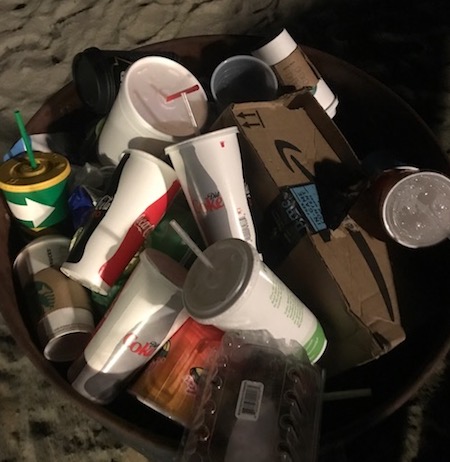
When you eliminate bottled water and sugary drinks, you also eliminate the packaging, the bottles caps and of course the plastic bottles. 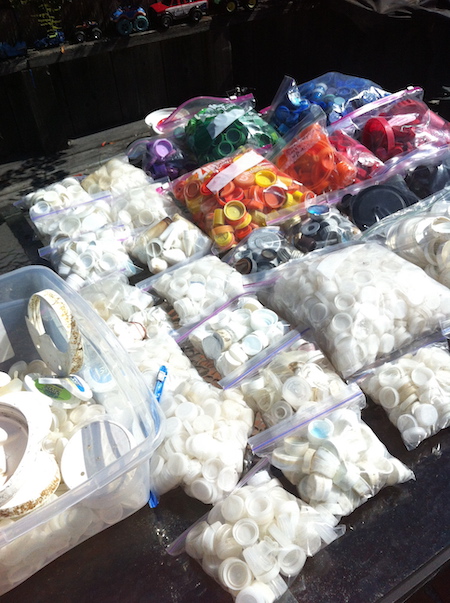
- You stopped buying any drinks and just drank water from your reusable bottle? You can alway flavor your water with ginger, lemons, limes and other spices and fruits.
- Total plastic bottles picked up 5616, total plastic bottle caps picked up 4757.
4.) You stopped buying alcohol? (That might be difficult) The Bureau of Labor Statistics states that Americans spend about 1% of their yearly income on alcohol. In the US that is about $565 per year. Another survey found American households spending an average of $484 annually on these drinks or about $40 a month.
- 99% of the 2717 Glass bottles I picked up off the beach and about 50% of the 4153 aluminum cans I picked off the beach are alcohol.
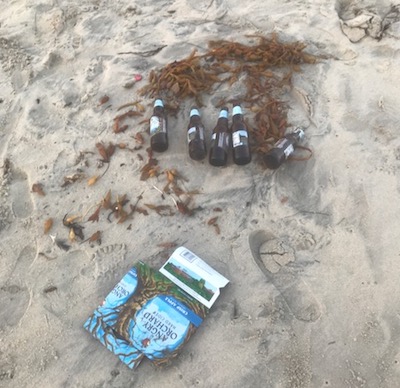
5.) You stopped smoking, e-cigs or vaping. e-cigarette sales in just the U.S. have surpassed $2.35 billion. Think about the trash aspects.. and there is a lot. 15.5% of Americans smoke, per the Centers for Disease Control and Prevention. But for those who do, it can be a very costly habit. The cost to the average American household is $337 per year, according to the Bureau of Labor Statistics’ 2016 Consumer Expenditure Survey.
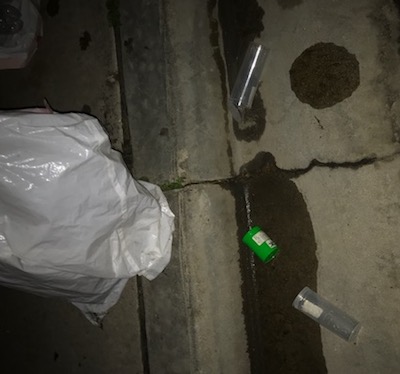
6.) You stopped buying cheap toys or gadgets that last about 30 days? T. Rowe Price 2018 survey on Parents, Kids & Money stated that 45% of moms and dads said that they make an effort to get their kids everything on their lists, regardless of the cost of the items. 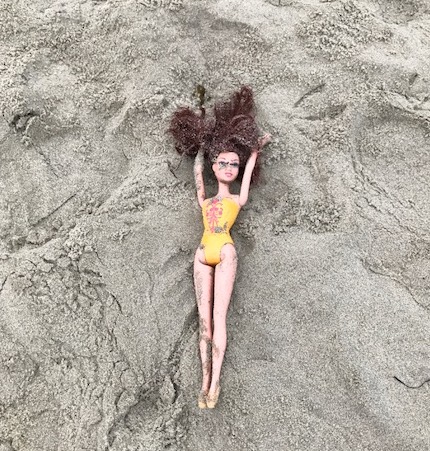
7.) You started shopping at secondhand stores? Not only would you reuse products, you would save quite a bundle. The average household spending on clothing tailoring and dry cleaning) is $1,803 annually. Bureau of Labor Statistics’ 2016 Consumer Expenditure Survey.

8.) You stopping purchasing items such as hair conditioners, body washes and other cosmetics. Money magazine says the average woman will spend $43 on a cosmetic shopping trip and will spend over $15,000 in her lifetime. According to a Groupon survey, women (who spend money on appearance) spend an average of $3,756 a year (or $313 a month). Conditioners represent 24% of the overall hair care market in the United States. Think about how much less waste would be generated.
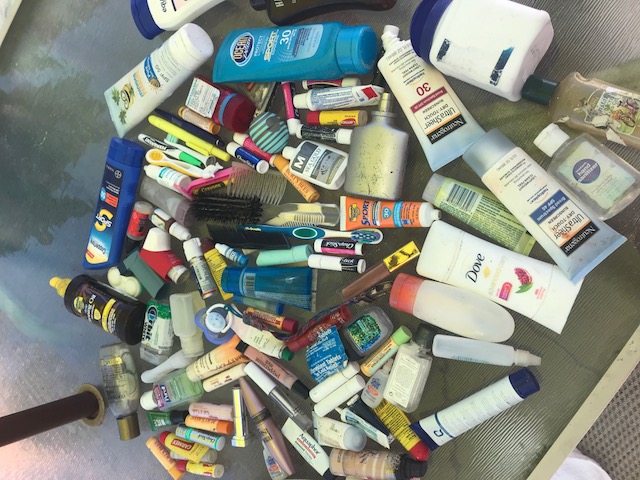
9.) What if you stopped buying deodorant? Statista stated in 2015 deodorant sales in supermarkets in U.S. came to $618,980,000. Another says that we Americans spend $18 billion dollars a year on deodorants and antiperspirants. That is a lot of plastic containers in the trash. Here is a secret.. I stopped using deodorant years ago.. and while it takes a bit of time for the body to adapt.. don’t miss it and don’t have body odor. There are plenty of natural oils that can take that place. Here is another secret… you don’t smell bad.. using deodorant is an American PR hype.. and is actually not good for you. (Huff Post)
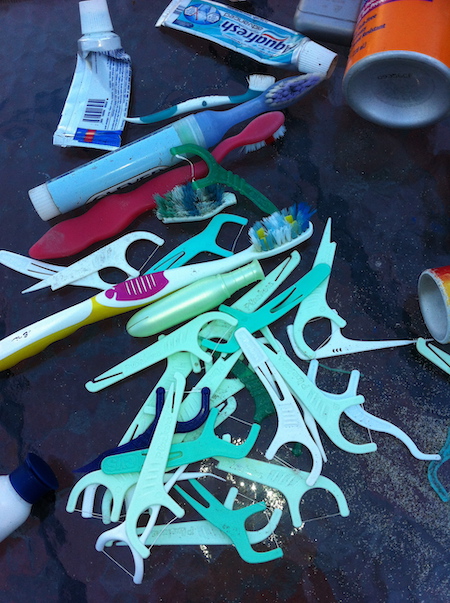
10.) What if you started washing your hair only 1-2x per week? ‘If your skin and hair are anywhere from normal (not super oily and not super dry) to dry, you probably only need to wash it once or twice a week, according to a Columbia University health column. If you have a greasy scalp, you probably need to wash your hair more often.’ (Science Alert) Each person spends about $35 per year on shampoo. It took me about 2 month to get to the point where I could get by with only washing my hair 2x per week. It is hard to do, when you are used to getting into the shower and reaching for the shampoo. But it is very doable.
11.) You stopped buying un-necessary paper products like Kleenex and paper towels, paper napkins, paper plates and facial tissues.
12.) You stopped buying hyped cleaning supplies? You used only castile soap, baking soda and vinegar and lemon. Savings are over $200 per year. Every swifter and supplies, every sponge… think about it.
13.) You ate at home every night? The average household spends an average of $3,008 per year on dining out in another survey Americans spend $1,175 just on take-out meals every year. In another survey the total into $4,049 for food at home and $3,145 for food away from home.
The median income for an American was around $44,564.. which quite frankly is difficult to live on in many cities and states. According to a Pew Charitable Trusts survey. more than 55% of American spends as much or more than they earn….
I think about all the shampoos, deodorants, mascara, lotions, lip balms, lipsticks, eye drops, sunglasses (cheap) sunscreens, vitamins, make up brushes, toothbrushes, toothpastes…. that I have found on the beach. It totals to $1000’s. I think about all the unused cups, plates, plastic utensils, straws I have picked off the beach. How much would one have saved in money and waste if they either didn’t use or reused the above? Another $1000, another $1000 in wasted food, another $1000 in clothing..
How much would they save.. if they eliminated all unnecessary or over-hyped consumer products?
That is only the dollar amount, not the 8000+ Tons of beach trash that I have picked off the beach.. 8000 tons trash that is mainly unnecessary and non-recycled.
What To Do
You bring your own reusable bags to the grocery store? Includes bulk items.
Investigate herbal remedies to deal with some of your health issues rather than purchase ‘trendy-hyped product in plastic containers.
Aways carry your reusable bags or a back pack for any items.
MaKe your own hair care products from your kitchen. It is easy to do because most of those ingredients are in your kitchen.
Join a Buy Nothing group on Facebook. Search for Free Stuff on Craigslist .
Buy the best you can afford and take care of it.
Create the demand for non-plastic alternatives or recycled bottle markets. Only you the consumer can change the way products are marketed and sold.
I am not a zero waster, although I would love to be. I make a concerted effort to buy less, saving myself $1000’s a year, I support ‘local’ and recycled products and packaging and try to recycle as much as possible. I try to buy products that are in recycled materials in order to create the demand for recycled materials.
It takes time.. Rome was not built in day but reducing plastic- waste consumption is just a matter of changing thinking and shopping habits.
